Remote monitoring drives value-based care
Payers pair with providers to manage patients with chronic disease at a distance.
Mark Twain National Forest, located in the southern half of Missouri, has more than 750 miles of trails for hiking, horseback riding, and mountain biking. Boasting 350 miles of perennial streams that welcome adventurers in canoes and kayaks, the forest is also where a disabled Vietnam veteran is spending his retirement years in a cozy home with his wife. During his 18-month combat tour, this veteran never saw the inside of a helicopter. But since he started suffering from chronic cardiac issues two years ago, he’s been Medevacked 13 times to Mercy Hospital Washington, which is 100 miles away.
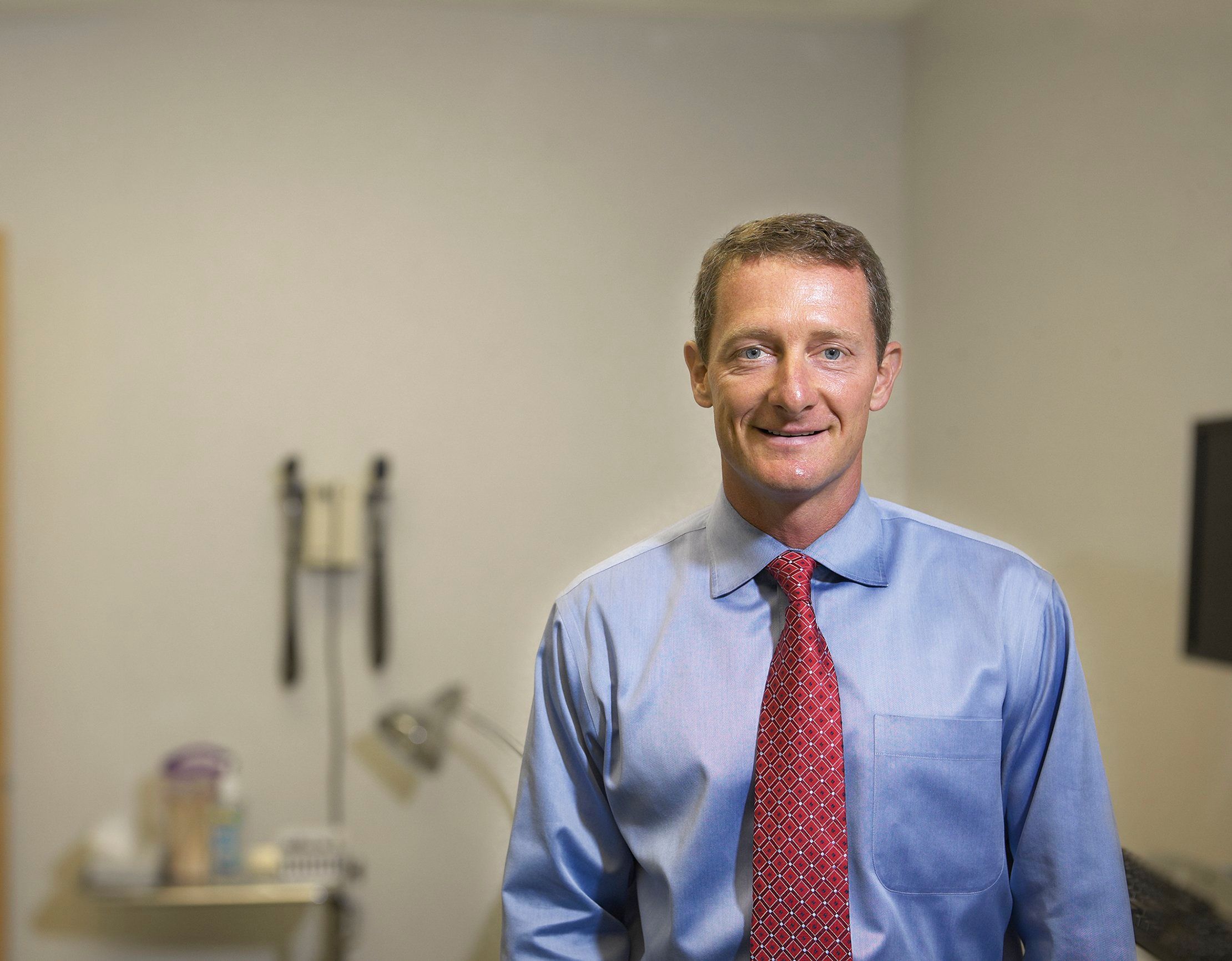
HeltonWhen J. Gavin Helton, MD, medical director of ambulatory medicine at Mercy Virtual Care Center heard about this disabled veteran, he wanted to do what he could to bring the resources of Mercy Virtual Care Center to him.
The center is part of Chesterfield, Missouri-based Mercy-a large health system made up of 45 hospitals across Missouri, Oklahoma, Kansas, and Arkansas-and it provides remote monitoring of patients struggling with chronic illnesses such as heart failure, diabetes, and chronic obstructive pulmonary disease.
Today, the Vietnam veteran’s pulse, oxygen, blood pressure, and weight measurements are sent wirelessly to the clinical team at Mercy Virtual via an iPad app, which also facilitates video-based visits between the veteran and the clinical team. Helton says biometric data is collected from this patient at least daily, and the clinical team compares that data to the patient’s baseline numbers.
Having access to all of this information in real time allows the care team at Mercy Virtual to proactively address the patient’s needs before they evolve into an emergency situation, says Helton. In fact, since the veteran came under Mercy Virtual’s care, he hasn’t needed to be rushed to the hospital, says Helton. Instead, he’s remained exactly where he’s decided to spend his retirement-in his house in the forest.
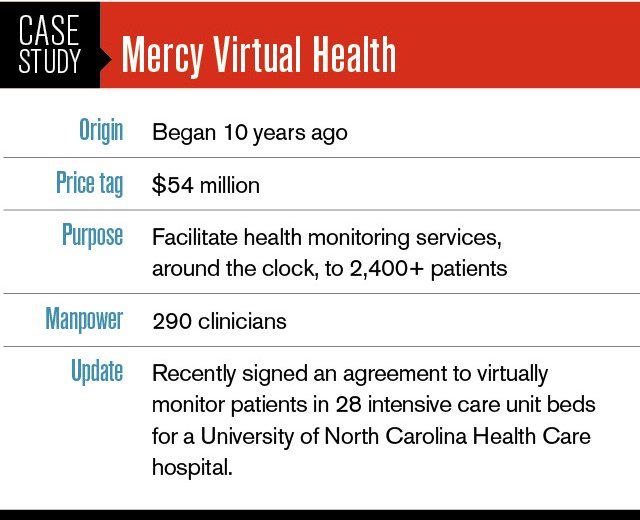
Next: Filling gaps in care
Filling gaps in care
Before Helton joined Mercy Virtual, he was a practicing primary care physician for 17 years. “During that time, I saw that the needs of our chronically complex medical patients were not always met in an ideal fashion,” he says. “They have continual needs, but we were only meeting their needs by meeting with them episodically.” That leads to gaps in care for very ill patients, which translates to a great deal of unnecessary emergency room visits and hospital admissions, says Helton.
With remote monitoring, however, the clinical team at Mercy Virtual can fill in those gaps in care with what Helton calls “more of a proactive approach.” The team sits at workstations monitoring patients who are located in their homes, and connects with patients if any of their numbers deviate significantly from their baseline biometric data. And that means those remote clinicians can predict when a patient could decompensate, before the patient would even consider contacting their doctor or need to visit the emergency room.
Interoperability, or the ability to exchange data seamlessly between electronic health record (EHR) systems, is crucial to program success, says Helton. In practical terms, all diagnoses, care plans, and prescriptions are documented electronically, and accessible to the patients’ primary care providers, specialists, hospitalists, and virtual team.
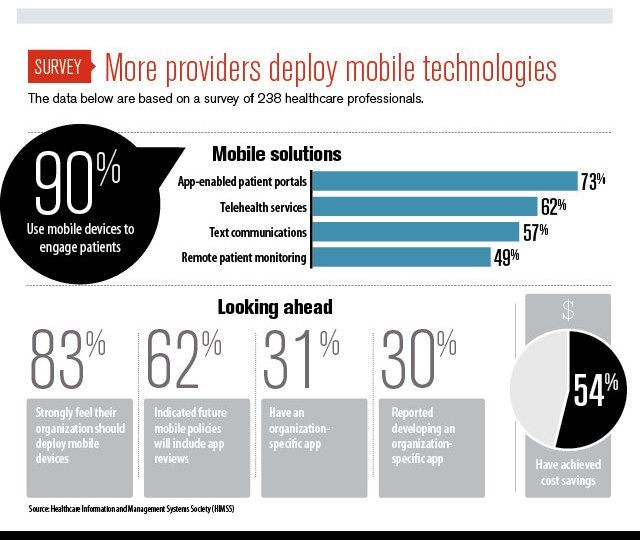
Next: Empowering patients and providers
Empowering patients and providers
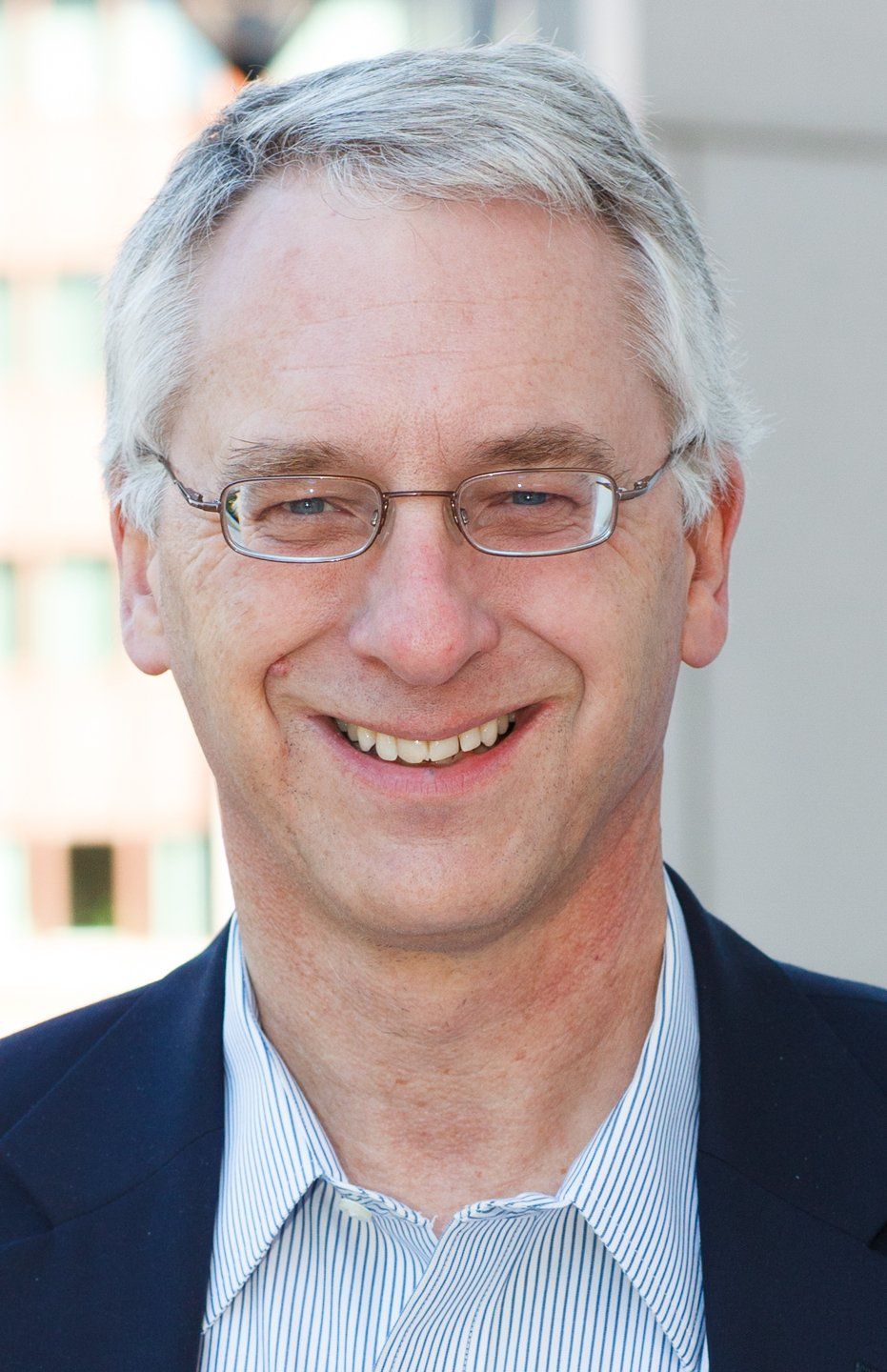
KvedarMeanwhile, about 1,200 miles due east of Mercy, is Boston-based Partners HealthCare Connected Health, which provides remote monitoring to thousands of patients throughout the Partners HealthCare network. Joseph Kvedar, MD, vice president at Connected Health, is excited about remote health monitoring because it puts patients in charge of their health in a way they’ve never been before.
For example, Connected Health has a program that monitors diabetes patients remotely. With this program, patients’ glucose readings are uploaded via glucose monitoring devices so that a nurse or diabetes educator can monitor their blood sugars in real time and call them if intervention is required.
“We find the big value from this approach to care comes from the feedback loop [for patients],” says Kvedar. “The second value is the motivation it provides to improve your health based on a quantitative analysis of your blood pressure or your weight or your blood glucose levels.”
Since keeping diabetes patients active is a valuable part of managing their disease, the program also helps them manage their activity levels and it sends them motivational messages daily to encourage activity, says Kvedar.
Another area that Connected Health has focused on is pain management for cancer patients through a partnership with the palliative care service at PartnersHealthcare.
The Connected Health team provides a mobile app called ePAL that’s designed to empower patients in palliative care to better self-manage their cancer pain. The app reminds patients to take their medication as scheduled and educates them about ways to navigate through nausea and other side effects.
Here’s how it works: ePAL includes brief educational videos and supportive messages. It also allows patients to request medication refills. In addition, patients use the app to assess their pain levels over a 24-hour period at least three times a week; the app tracks patients’ responses and sends a notification to an on-call clinician if the pain gets worse or is severe.
Next: The payer perspective
The payer perspective
As providers recognize the benefits of remote monitoring, payers are also getting in on the action. Kvedar says payers are increasingly interested in the technology as the U.S. healthcare system continues to move toward value-based care. That’s because remote monitoring can help manage the health of patient populations for which payers are responsible.
Kvedar notes that CMS released a chronic care management code in January 2015 that allows providers to bill for 20 minutes per month of non-face-to-face time devoted to care management. “What’s most important here is that this payment code recognizes the value of care management that’s not face-to-face and can be delivered by nonphysician providers,” says Kvedar.
“In an ideal world, health plans would cover the cost of remote monitoring devices, such as wireless blood pressure cuffs and tablets, and reimburse providers for their time monitoring patient data,” he says.
Member loyalty is one other reason payers should be interested in partnering with healthcare providers on remote health technologies, says Kvedar. “People love this stuff-patients and consumers. And the more you can offer [to your members], the more likely you are to garner loyalty to your plan.”
Next: Creating a home-grown program
Creating a home-grown program
For healthcare organizations that want to launch similar remote health monitoring programs, Kvedar recommends staying away from putting a “techie doctor” in charge. “While you can see that as the intuitive choice, often, when you put technical people in charge, you get intensively technical solutions where something more simple might do the trick,” he says. Here are some other recommendations:
- Get patients involved. While technology should be an important part of any remote health-monitoring program, designing the right solutions for patients means including their voices as well. The best solutions don’t have to be “cutting edge,” Kvedar says; what matters is the solutions meet patients’ needs.
- Don’t let money cloud the vision. Mapping home health monitoring programs to a return-on-investment is valuable, he says. But he cautions executives against focusing too early on the financials. You have to be willing to learn how the app or device works and then modify it over time. Later on, when you have determined that it works well and saves money and improves quality, then you focus on how you commercialize it, says Kvedar.
- Focus on information flow. The intent with remote monitoring devices such as blood pressure cuffs or glucose monitors is to alert the care team if there’s a spike that could lead to a health problem, says Rick Ratliff, former managing director at consulting firm Accenture. Still, all of that information can be overwhelming for an individual doctor, even if the information flows directly into their EHR.

RatliffWhat’s important, says Ratliff, is that hospitals and practices redesign their work flow based on the information that they’re receiving from patients from these devices. That may require having a nurse monitor vital signs from patients and then calling patients when there’s a spike in blood pressure-rather than just calling the patient at a certain time in the day.
Next: Transforming healthcare delivery
Transforming healthcare delivery
Jonathan Linkous, chief executive officer of the American Telemedicine Association, has been involved with the Washington, D.C.-based nonprofit for 22 years. He says remote health monitoring is the best way to “transform healthcare delivery, whether the patient is in the hospital or in the home.”
He adds that most patients who need remote health monitoring aren’t in rural areas, as some might expect. “It’s in the urban centers where we have people with chronic diseases, whom we call ‘frequent fliers,’” he says. “These are patients with chronic conditions who are going in and out of the emergency room because there’s no coordination of their care in their geographic area.”
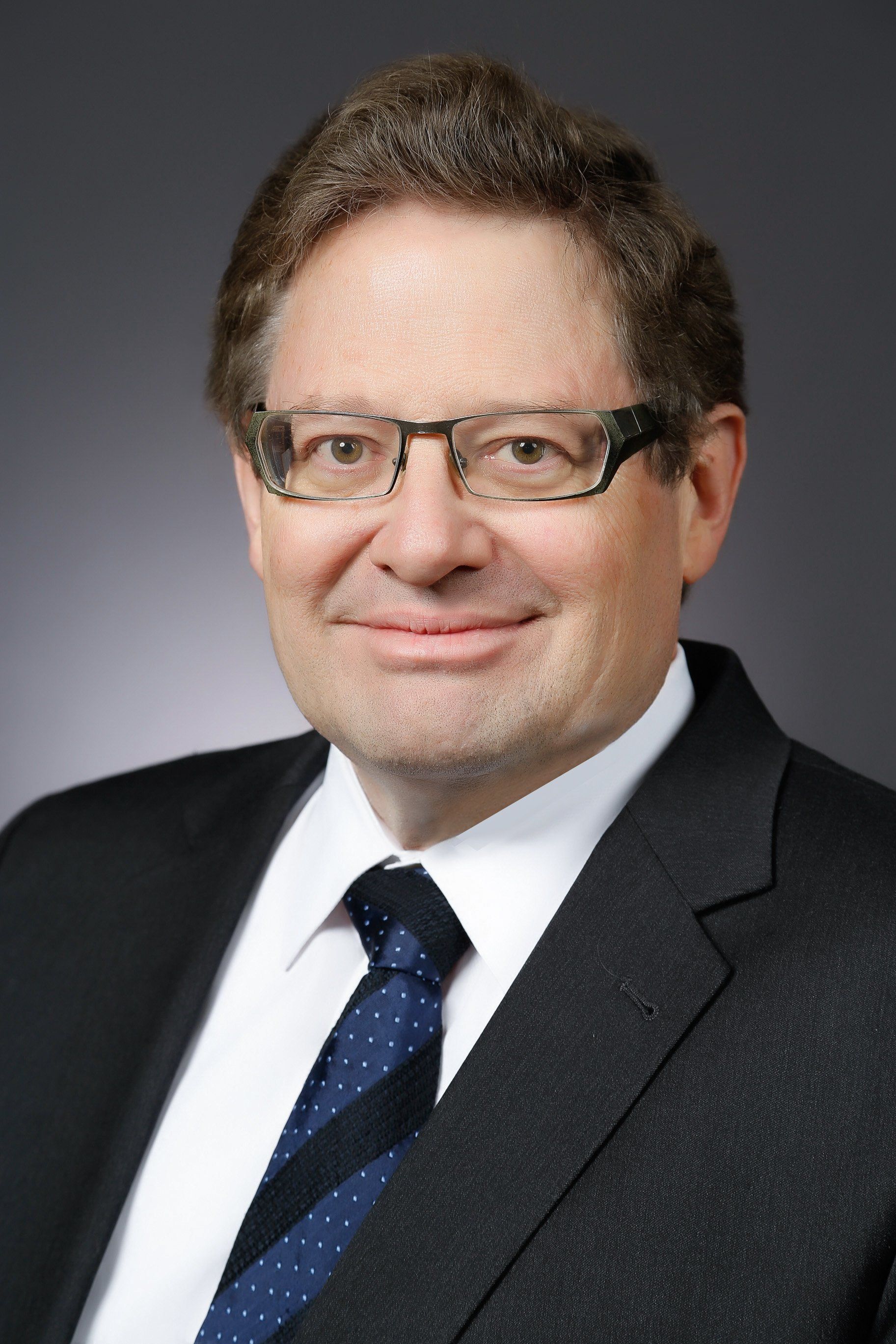
LinkousLinkous says barriers continue to prevent widespread adoption of remote health monitoring, one of which is payer support. “Healthcare is a slow adopter of innovation. And remote health monitoring is no different. The resistance is based on the fear of the unknown, resistance to change,” he says. State licensure is another challenge, since doctors and nurses are licensed on a state-by-state basis. But he’s encouraged that there are more interstate agreements that allow nurses and doctors to practice across state lines.
The Veterans Health Administration, one of the largest providers of telemedicine, provides care to close to 100,000 veterans with chronic health conditions via remote health monitoring, he says. Another early adopter of remote health monitoring is the U.S. prison system.
Opportunities abound for remote health monitoring, especially as the country continues to transition into managed care-where the focus will be on keeping people healthy, rather than charging for each service provided, says Linkous.
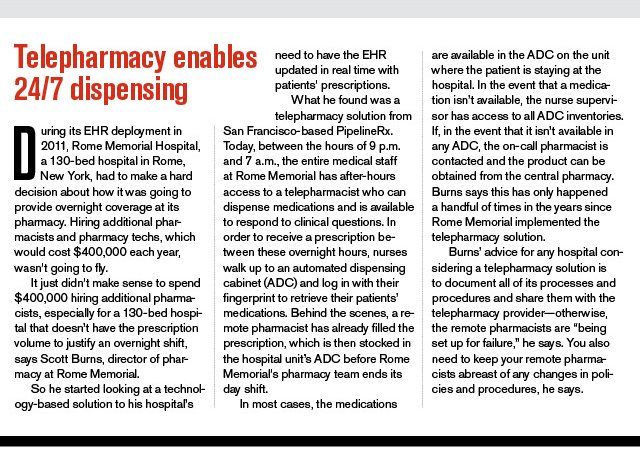
Aine Cryts is a writer based in Boston.
In the Scope of Virtual Health and the Future of “Website” Manner, Per Ateev Mehrotra
August 10th 2023Briana Contreras, an editor of Managed Healthcare Executive, had the pleasure of catching up with MHE Editorial Advisory Board Member, Ateev Mehrotra, MD, MPH, who is a professor of healthcare policy at Harvard Medical School and an Associate Professor of Medicine and Hospitalist at Beth Israel Deaconess Medical Center.
Listen
Extending the Capabilities of the EHR Through Automation
August 2nd 2023Welcome back to another episode of "Tuning In to the C-Suite," where Briana Contreras, an editor of Managed Healthcare Executive, had the pleasure of chatting with Cindy Gaines, chief clinical transformation officer at Lumeon.
Listen